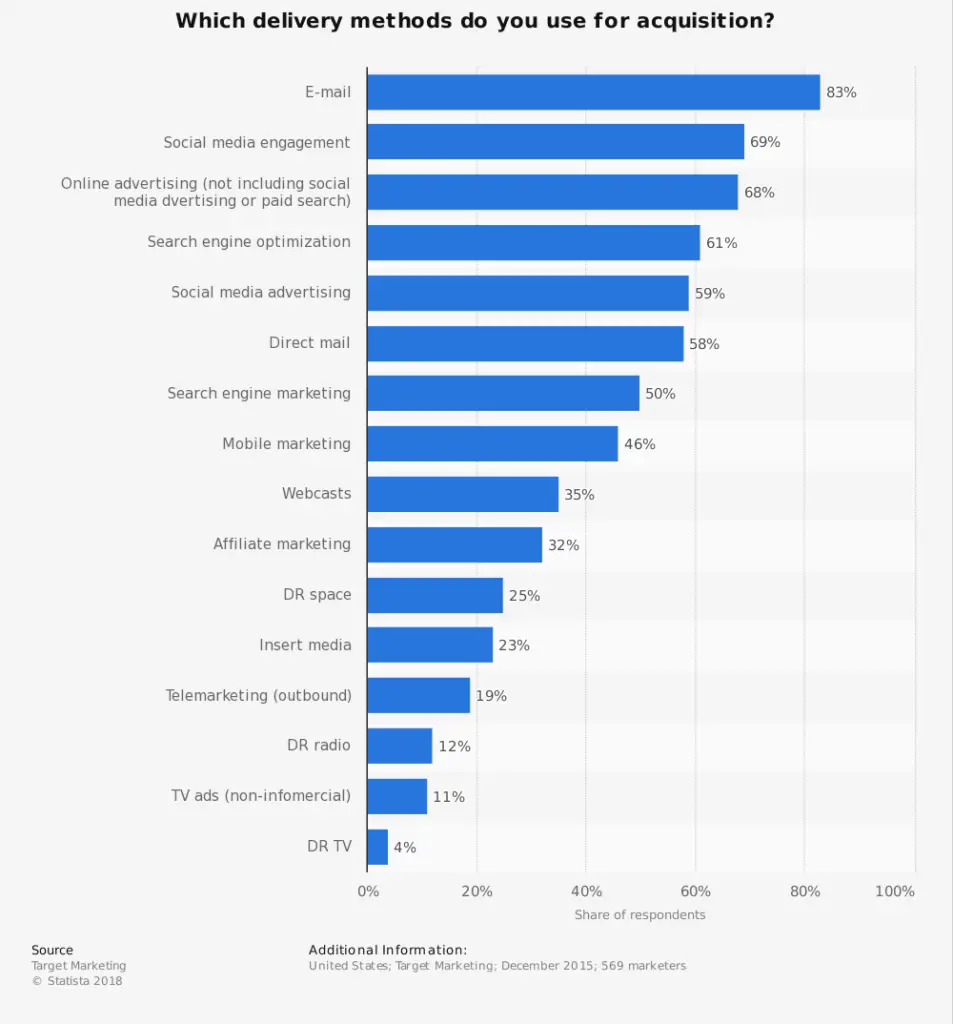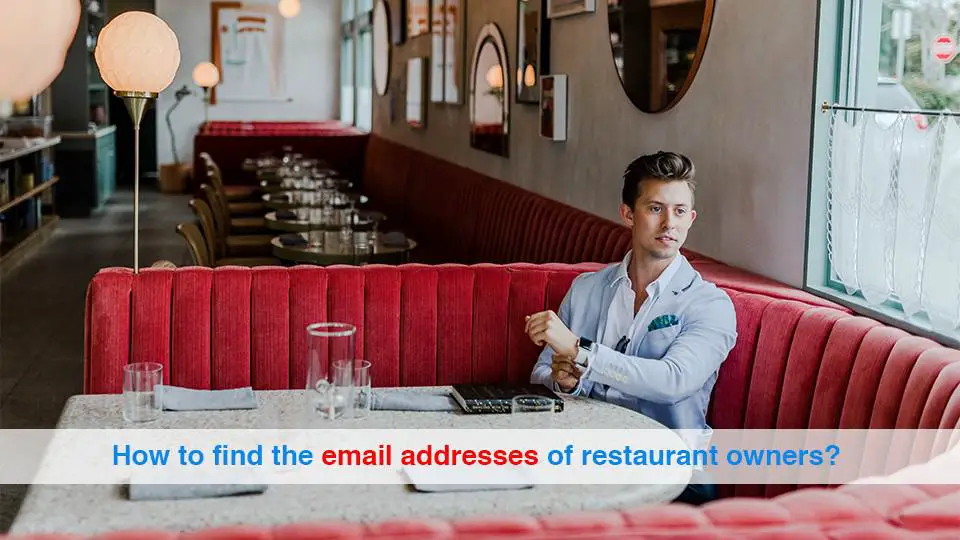In the age of social media, people are more likely to respond to a message on Twitter or Facebook than to answer an email.
That’s why it can be difficult for marketers and other professionals who need contact information for restaurant owners.
Luckily there’s a way that you can find those emails without having to resort to spamming your potential customers with multiple messages across different channels.
From the Business Data List product catalog, search and download restaurant email addresses for marketing.
Email marketing is one of the most effective ways to build your customer base. You can use Facebook ads or Google Adwords to target people by location and demographics, but nothing beats the power of personalized emails from someone in your industry.
Plus, it’s an affordable way for small businesses to get their foot in the door with these larger companies!
How Do I Contact A Restaurant Owner?
Marketers are always looking for new ideas to help them reach their target audience. One of the ways this can be done is by reaching out to restaurant owners and seeing if they would like their establishment featured in a marketing campaign.
It can be hard to get in touch with restaurant owners and managers, and they are often too busy running their business to answer phone calls or emails from customers.
A lot of restaurant owners and chefs are on social media these days. You can follow them on Twitter, Facebook, or Instagram, and they will usually reply to you. If that doesn’t work or if you’re looking for a specific contact email address, then try searching Google for the restaurant’s name followed by “contact.”
What to do when you want to contact a restaurant owner? If the company has an online presence, try emailing them or contacting them on social media. However, if they have no way of being found online, it may be difficult for you to get in touch with them.
One of the best course of action is to reach out through their local business association and ask how you can find the person who owns the establishment. You should also look up other nearby restaurants and see if one of those owners knows who runs this particular place as well.
What is the best way to focus retention of restaurant owners?


Looking For Targeted Leads?
Find accurate B2B contact information for targeted marketing. Close more deals and start more conversations.
How Much Does A Targeted Mailing List Cost?
A targeted mailing list is a database that contains information about people with specific interests, demographics, and behaviors. This type of data can be used to customize messages for more personalized marketing campaigns.
To target customers effectively, you need access to their contact details like email addresses or phone numbers. It’s also important to know what these contacts are interested in so you can create relevant content and offers. For example, if they’re interested in the latest fashion trends, you may offer discounts on online clothing items.
The cost will depend on how many names or leads (people who have shown some interest) your company needs, as well as the quality of those leads (how much information they provide). Generally speaking, though, it will usually cost $1-5 per lead.
The cost of a targeted mailing list depends on the size (number) and qualifying degrees for each person on that list.
A small set of targeted data can be as affordable as $100 and up to over $10,000 or more. Prices vary with what you’re looking for (e.g., name, address information, type of business) and whether it’s a national or local area list with target demographics (e.g., age group).

How Do I Target A Restaurant Owner On Facebook?
Marketing on Facebook can be a daunting task, especially when you’re targeting the right customer. For example, how do I target a restaurant owner?
I’m sure you’ve heard that Facebook ads are one of the best ways to generate more leads and sales for your business.
And while this is true, it’s not as simple as just posting an ad on Facebook. To get the most out of your campaign, you need to create a compelling offer and target the right people.
It’s best to try and connect with the restaurant on their local Facebook page first. If they have a google outlay of all their locations (e.g., “ABC Company – 5 locations”), then you can visit each location’s page and send them a message that way.
If they don’t have an official Google listing for their stores, you should search through pages near the one where your meal was served and find somebody there who might know about contacting the store managers.
You may also write to fb@facebook’s general email address – but note there is no guarantee that the message will be read or responded to.
To use ads, you can target them on Facebook by going to the “Ads Manager” on your account, clicking “Create Ad,” and choosing which market you would like to advertise for.
How Do You Approach A Restaurant To Sell Produce?
If you’re a farm market that wants to sell your produce at restaurants, it might seem like an intimidating prospect. However, if you approach the restaurant owner with the correct information and attitude, then there’s no reason why they won’t be willing to work out a deal with you.
The first thing you need to do is research the restaurant in advance – find out what type of food they serve and how many people visit on average each day.
Next, make sure that your product is already prepped for cooking (cut up/peeled/cubed) to save them time when preparing their dishes.
Finally, always carry samples of your products – this will show them exactly what they are getting before committing to buying anything.
Approach the manager or owner politely, smile, and introduce yourself.
Explain that you sell fresh produce near their address, put two positive words in on your own (for example, “Organic” and “Organics”) to avoid being interpreted as having a negative tone in your introduction, and then ask them if they are interested.
Lead by giving an example of a location that does this successfully – ‘The Farmer’s Market.’ Offer sampling of the produce, mention prominent people who have purchased from you previously, such as high school students with hectic schedules.
If no interest is expressed, remain professional and walk away silently without getting angry or frustrated; it may take more than one request for the owner to be convinced.
What Is The Core Product Of A Restaurant?
In the restaurant industry, your product is everything. It’s what sets you apart from your competitors, and it defines what people know about you. The core product of a restaurant is what customers order in addition to drinks and desserts.
The core product of a restaurant is the food they serve. This is due in part to how non-materialistic society has become.
People want a tangible, real experience and are willing to pay for it. They don’t just want an image or whatever was filmed on their TV screen that day; they want something consumable or visually pleasing and new that can be used as a point of conversation with others.
For the sake of longer life spans, I believe that we need more people who are experts at consuming what their society produces, and I would argue we’re not good at it anymore.
Being able to talk about food, wine, art shows – these things have value other than just being consumed then discarded.
What Is The Target Market Of A Restaurant?
Many people have a desire to be the owner of their restaurant. However, many do not understand that there are different restaurants, and each style has its target market.
As it turns out, there are many different ways to answer this question. The first way to answer this question would be by location.
For example, if a restaurant were located in New York City, their target market would be people living in New York. If they were located in Los Angeles, they would have a much larger area than their target market could live in and visit them when they’re craving something new or want to try something new from one of their menu items.
The second way to answer this question is by customer type. Restaurants will often specialize in certain kinds of food, such as Italian food or seafood dishes which can help narrow down who their audience will be.
Answer: It depends on the type of restaurant.
If it’s a grocery store, then the target market is everyone in that community. If it’s an Italian restaurant, then the audience will be primarily people who like Italian food. The answer to this question can vary based on many factors, so a good rule of thumb is ‘whatever you want it to be.’
A good way of thinking about your target market when building a restaurant business model is assessing what size of the city you feel would provide enough customers for your product so that they make up at least 60% – 70% (or more) of your sales.
At least this type of research should make for an informed identity and help give direction to your marketing strategy.
Conclusion
To find the email addresses of restaurant owners, you can try using a business directory like Yelp or Yellow Pages. You could also search for them on LinkedIn and see if they have their website with contact information listed.
If not, then you might want to consider purchasing a targeted mailing list from an online provider that specializes in this type of data mining service.
What is your budget? How many emails do you need at each location? These are factors that will help determine what option would work best for you.
When it comes to targeting restaurant owners on Facebook, there’s no surefire way to go about doing this. Still, we suggest posting relevant content that speaks directly to their needs as restaurateurs and foodies.
Glossary
A restaurant revitalization fund is a type of loan program initiated by the government that helps to stimulate economic growth. The backing comes in a tax credit that businesses can use to finance their marketing efforts, which makes it beneficial for not only large restaurants but also small and medium-sized ones.
A loyalty program is a marketing strategy targeting the potential customer, promotes loyal customer retention. It is commonly used by business owners in banking, hospitality, insurance, or retail. For example, restaurant customers reward completing assigned tasks at regular intervals (e.g., ordering a special offer on the menu item). Theoretically, the rewards build up over time until the customer reaches their goal (tip), complimentary beverage or cuisine for diners, flight miles, gift cards, etc. The option to be a subscriber from promotional emails, using a QR code to signup on the landing page, is proving popular.
A Restaurant Database is a directory of restaurants, as well as the services they provide. Restaurants’ databases are essential to help prevent food-borne illnesses and find out about restaurant inspection scores. For example, since the health department updates these rankings daily or weekly, you’ll know if your local restaurant has had any violations before dining there.
Automated emails, also called autoresponse messages or auto-replies for short, are common in the restaurant industry to make sure that customers visit their restaurant website or app. Customer data is collected to help the marketer employee to send better future emails.
Direct mail is the practice of sending unsolicited postal-delivered advertisements in letter form or postcards to targeted recipients.


